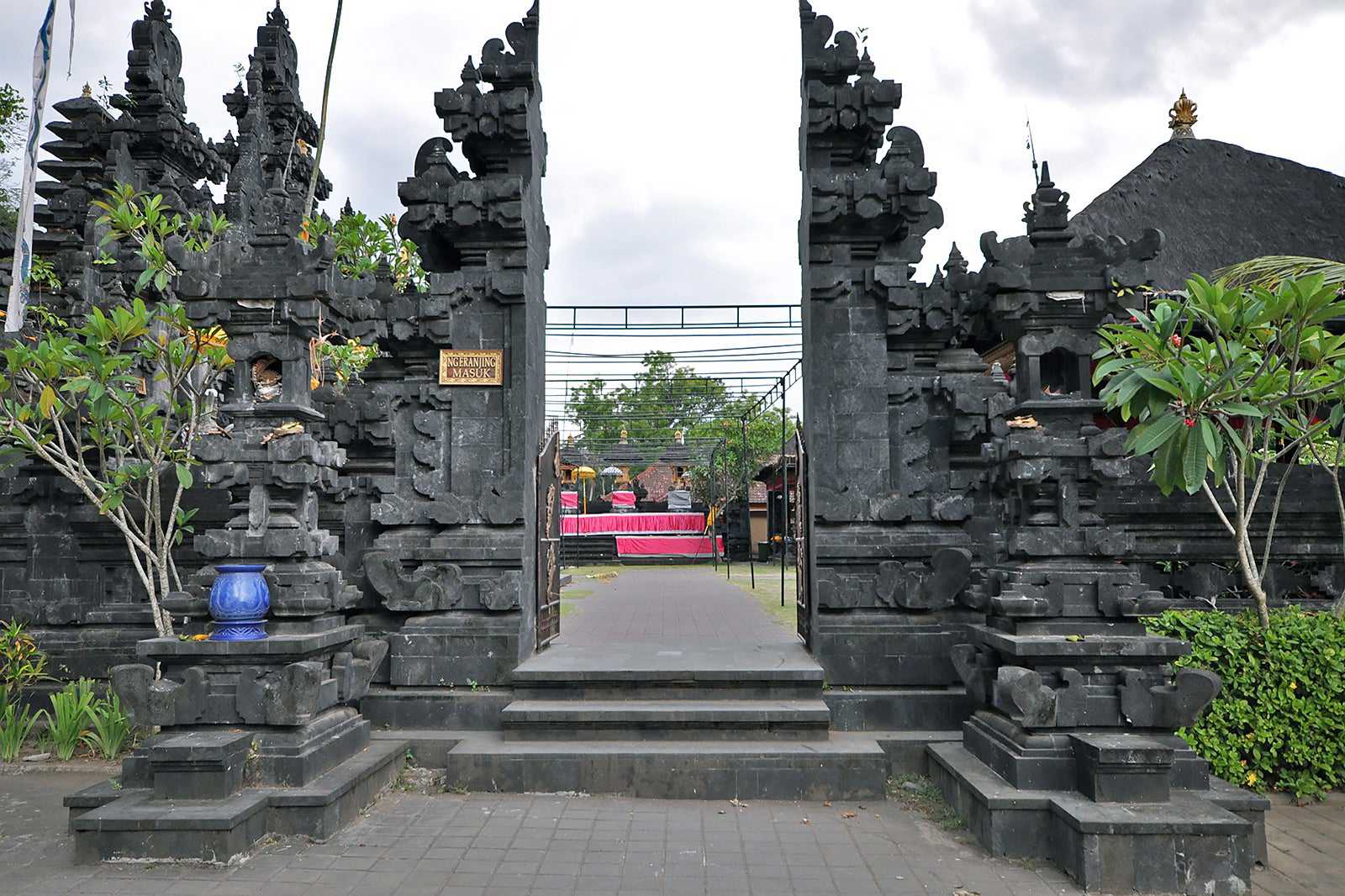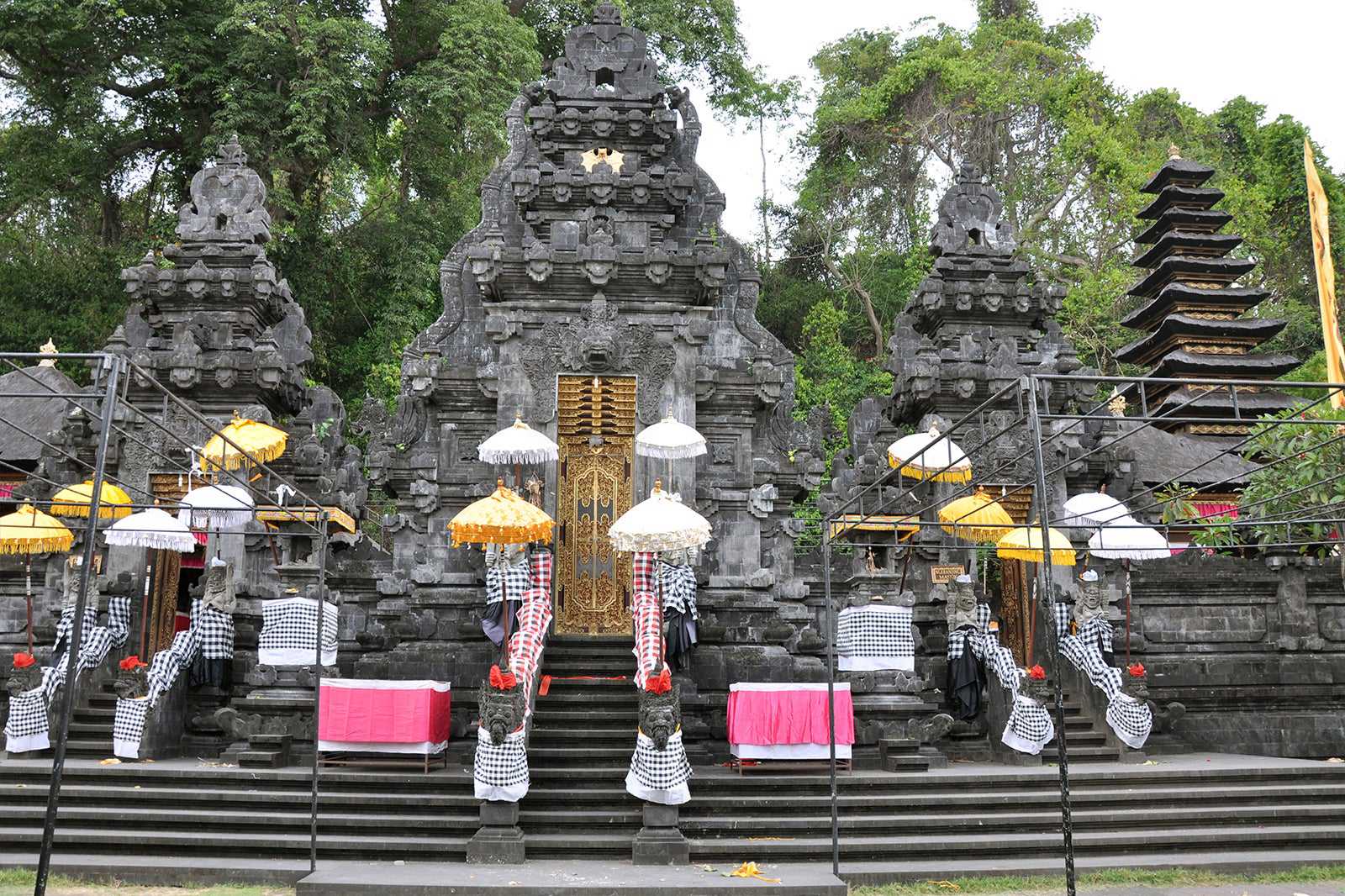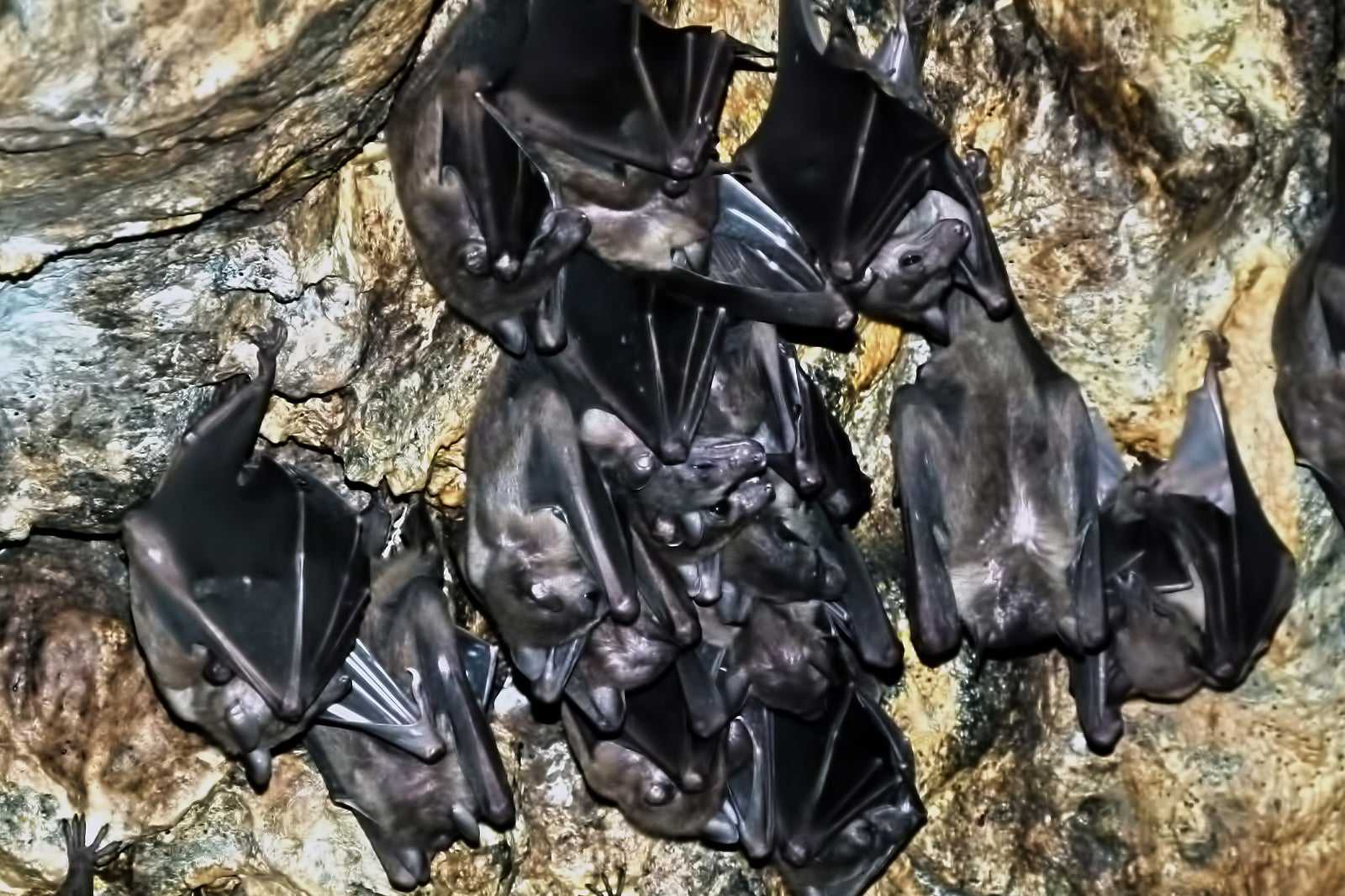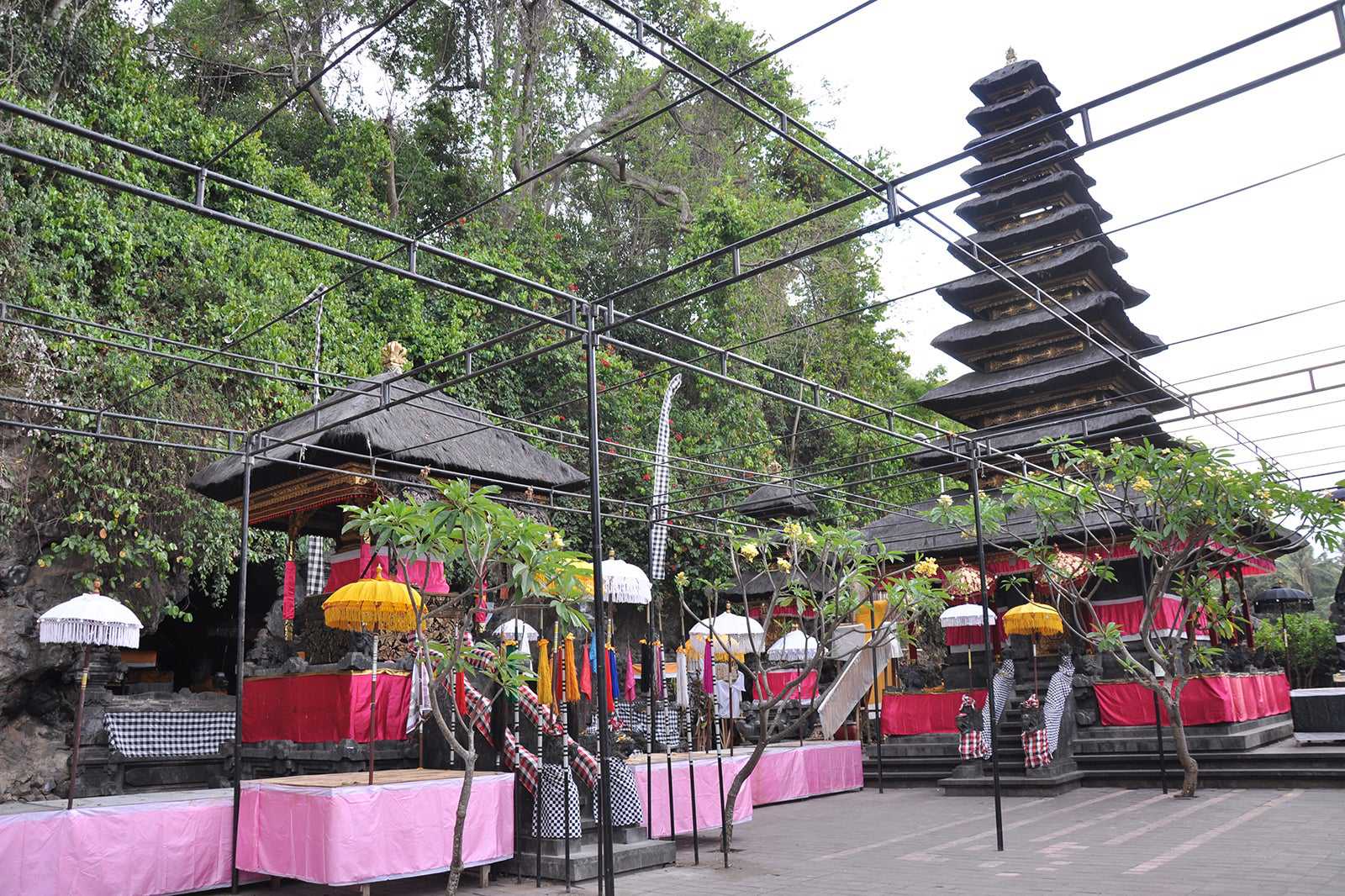Goa Lawah is one of Bali’s most important temples. It features a complex built around a cave opening that is inhabited by hordes of bats. Its name simply translates to 'Bat Cave’. The temple was established in the 11th century by Mpu Kuturan, one of the early priests who laid the foundations of Hinduism on the island.
It’s a popular stopover for locals journeying to the eastern parts of Bali, who come in with offerings and short prayers before continuing on with their travels. For foreign visitors, it’s often included in many temple excursions and is one of the first stops on tours to Candidasa and regions within the Karangasem regency. You can easily see the outline of Nusa Penida Island on the horizon from Goa Lawah.
Goa Lawah Temple in Bali - one of the highlights of 39 Best Things to Do in Candidasa and East Bali and 12 Weird and Unusual Places to Visit in Bali (Read all about Bali here)

Ảnh của Jorge Láscar (CC BY 2.0) đã điều chỉnh
Goa Lawah Temple highlights
Large banyan trees stand tall at the main entrance of Goa Lawah. Upon entering the temple’s central courtyard, you'll see 3 bale (pavilions) in the 3 corners of the complex. These bale are usually where fruit offerings are placed and where gamelan bands play during major ceremonies.
At the centrepiece are age-old shrines which have withstood the hordes of nectar bats chirping in a frenzied din around and behind the shrines at the cave opening. You'll also find the Shivaite shrine, which has stood for thousands of years, together with a bale adorned with the motifs of Naga Basuki, the mythical dragon who's believed to keep the cosmos at a balance.
Once a place for deep meditation for priests, despite seeming impossible to do so amid the chirping, with the hollow cave opening amplifying the noise. Many people believe that the constant natural high pitches aided in their focus of thoughts.
During the piodalan temple anniversaries, Goa Lawah's scene becomes truly exotic with pilgrims in bright traditional attire carrying colourful parasols and banners.

Ảnh của Jorge Láscar (CC BY 2.0) đã điều chỉnh
Mystery of Goa Lawah Temple
One mystery that's yet to be solved is whether the legend that tells of the secret cave passage through to Besakih Temple, some 25 km northeast at the foot of Mount Agung, is true.
The tale goes that a prince from the Mengwi kingdom hid away from enemies inside the cave and subsequently followed through, eventually emerging at Besakih Temple at the foot of Mount Agung, north-east from this location. No one has attempted to prove or bring light to this interesting tale.
According to the locals and the temple community, the cave leads to 3 different locations: Mount Agung (Besakih), Talibeng and Tangkid Bangbang. There are various accounts of ash emerging from Goa Lawah when Mount Agung erupted in 1963.

Ảnh của Schnobby (CC BY-SA 3.0) đã điều chỉnh
Good to know about Goa Lawah Temple
The best time to visit is in the mornings when most of the locals living in the nearby villages come for their daily prayers. But afternoons can also be pleasant, as the large trees provide a balance of shade to cool the sultry southern beach breezes from across the road. At dusk, hordes of nectar bats swarm the skies over the temple to feast on airborne insects.
Goa Lawah’s piodalan (grand temple anniversary) takes place every 210 days on the Balinese Pawukon calendar. It also shares the same anniversary day with Uluwatu Temple. With its constant flow of pilgrims and visitors, the temple is well-managed and maintained.
Expect a denser flock of pilgrims leading up to the Nyepi holiday, when rituals of Melasti take place on the Saka New Year Eve. Long pilgrimages from various temples including Goa Lawah take place towards the coastlines when sacred heirlooms and temple items are blessed near the sea.

Ảnh của Jorge Láscar (CC BY 2.0) đã điều chỉnh
Goa Lawah Temple in Bali
Địa điểm: Jalan Raya Goa Lawah, Pesinggahan, Dawan, Klungkung, Bali, Indonesia



















